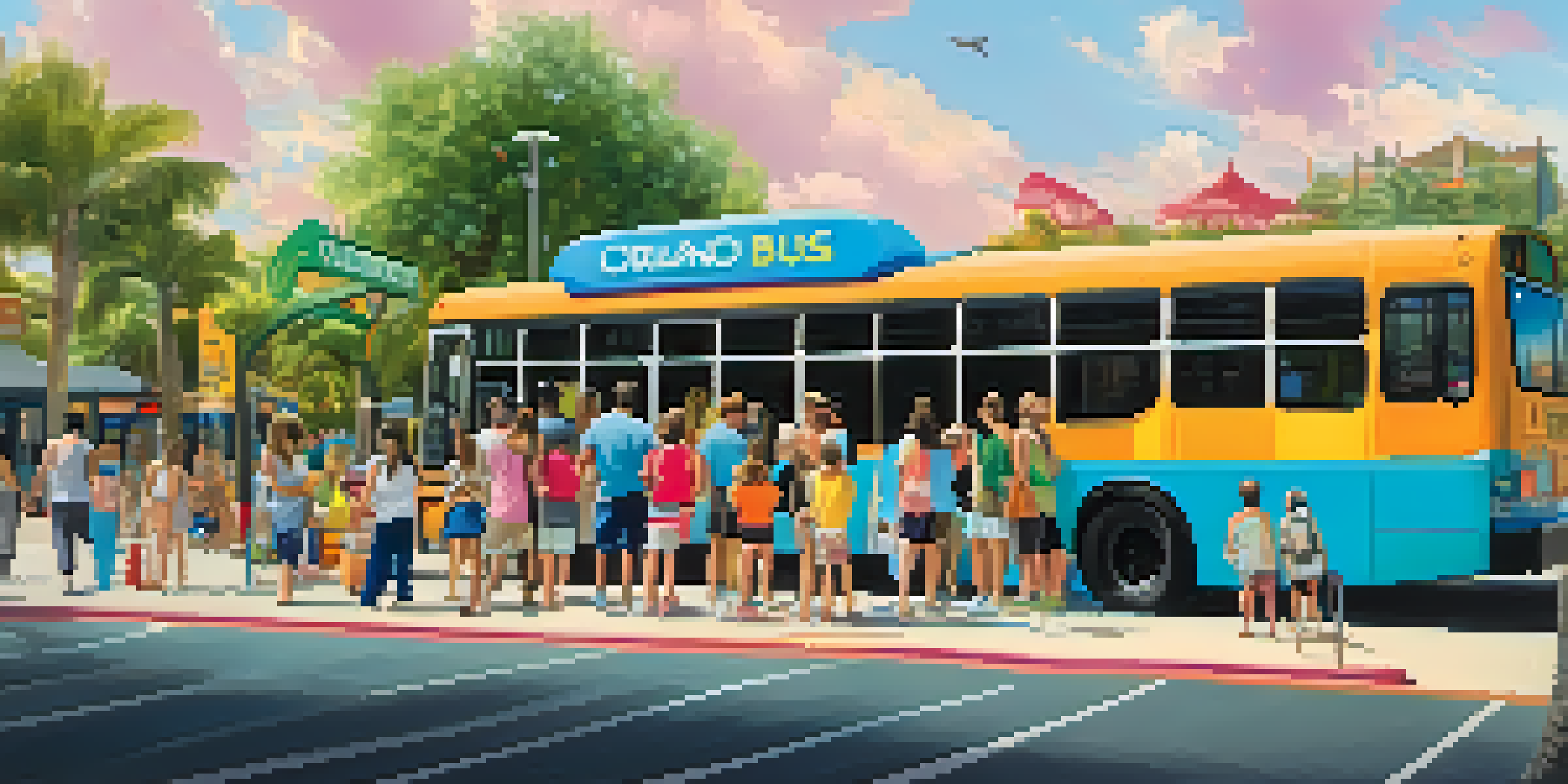Comparing Major Cities' Public Transportation in Florida

Overview of Florida's Public Transportation Landscape
Florida's public transportation system varies widely across its major cities. From buses to rail systems, each city has unique offerings that cater to its residents and visitors. Understanding these differences is essential for anyone looking to navigate the Sunshine State without a car.
Public transport is the backbone of a sustainable city.
While cities like Miami boast extensive metro systems, others like Orlando focus heavily on bus services. This diversity reflects the geographical and demographic differences across the state, influencing how residents commute and travel.
By comparing these systems, we can gain insights into which cities excel in public transport and which may need improvement. This examination serves as a guide for both locals and tourists seeking efficient travel solutions.
Miami: The Hub of Public Transportation
Miami is known for its robust public transportation network, featuring the Metrorail and Metromover systems. These rail services connect key areas of the city, making it easier for residents to commute without relying on cars. The Metrorail, in particular, offers a convenient way to travel from the suburbs to downtown.

In addition to rail, Miami's Metrobus service covers a vast area, providing access to neighborhoods that are not served by the rail lines. With over 100 bus routes, residents have the flexibility to reach various destinations throughout the city.
Diverse Transit Options in Florida
Florida's public transportation varies greatly between cities, with each offering unique systems tailored to their specific needs.
The integration of services and the ongoing expansion of routes position Miami as a leader in Florida's public transportation landscape. However, challenges like traffic congestion and service delays remain, prompting ongoing discussions about improvements.
Orlando: A Focus on Bus Services
Orlando's public transportation primarily revolves around the Lynx bus system, which offers extensive coverage across the city and surrounding areas. While there have been efforts to introduce rail services, buses remain the backbone of public transport in Orlando. This system is especially beneficial for tourists heading to popular attractions like Disney World.
A well-planned public transport system is key to reducing traffic congestion and pollution.
One of the main advantages of Orlando's bus service is its affordability and accessibility. Lynx buses are equipped to accommodate passengers with disabilities, ensuring that everyone can access the public transportation network.
However, the reliance on buses means that travel times can be longer compared to cities with more rail options. As Orlando continues to grow, there's potential for expansion and enhancement of its public transportation offerings.
Tampa: A Mix of Buses and Streetcars
Tampa's public transportation system is a blend of buses and streetcars, providing a unique commuting experience. The TECO Line Streetcar System connects downtown Tampa with the Channelside District, making it a popular choice for both locals and visitors. This historic streetcar service adds a charming touch to Tampa's transport options.
In addition to the streetcar, the Hillsborough Area Regional Transit (HART) bus system covers a wide area, ensuring that residents can easily navigate the city. HART offers various routes that connect neighborhoods with key destinations, including shopping centers and universities.
Miami Leads in Public Transit
Miami's extensive rail network and integrated metro services position it as a leader in the state's public transportation landscape.
While Tampa's transportation system is functional, it faces challenges such as limited coverage in some areas and infrequent service on certain routes. Ongoing discussions about future improvements aim to enhance the overall effectiveness of public transportation in the city.
Jacksonville: The Struggles of Public Transit
Jacksonville's public transportation system, operated by JTA, primarily relies on buses, with limited rail options. While the bus network serves many parts of the city, it often struggles with frequency and reliability, making it less appealing for commuters. This is particularly evident when compared to other major cities in Florida.
One notable initiative is the introduction of the Skyway, an automated people mover that services downtown Jacksonville. While it offers a unique mode of transport, the Skyway's reach is limited, and it has faced criticism for not effectively connecting with the broader transit system.
Despite these challenges, JTA is actively working on improvements and expansions to better serve the community. Enhancing public transit in Jacksonville is crucial for fostering economic growth and improving residents' quality of life.
St. Petersburg: A Growing Transit Network
St. Petersburg is making strides in public transportation, primarily through the Pinellas Suncoast Transit Authority (PSTA). This bus system has been expanding its routes and services to better meet the needs of the community. Recent efforts include increased service frequency and the introduction of the Central Avenue Trolley.
The Central Avenue Trolley is particularly popular, connecting downtown St. Pete with the beach areas. This service not only enhances accessibility but also promotes tourism, appealing to both locals and visitors looking to explore the coastline.
Future Focus on Sustainability
Cities in Florida are increasingly investing in sustainable public transportation solutions to accommodate growing populations and environmental concerns.
While St. Petersburg's public transportation is improving, it still faces competition from car-based travel. Continued investment and community support are essential for developing a more comprehensive transit network.
Comparative Insights: Strengths and Weaknesses
Each major city in Florida has its unique strengths and weaknesses when it comes to public transportation. Miami stands out with its extensive rail system, while Orlando relies heavily on buses. Tampa's mix of streetcars adds character, yet Jacksonville struggles with service reliability.
St. Petersburg is emerging as a city with a growing transit network, showing that improvements are possible even in areas with challenges. These differences highlight the importance of tailored public transportation solutions that address the specific needs of each community.

Understanding these comparative insights can help city planners and policymakers develop strategies for enhancing public transportation across Florida. By learning from each city's experiences, a more efficient and user-friendly transit system can be created.
Future Directions for Florida's Public Transportation
The future of public transportation in Florida looks promising, with many cities exploring innovative solutions to improve services. Investments in technology and infrastructure are becoming increasingly important as populations grow and cities evolve. For example, Miami is investing in smart transit solutions to provide real-time updates for commuters.
Additionally, the push for more sustainable options, such as electric buses and bike-sharing programs, is gaining momentum. Cities are recognizing the need for environmentally friendly solutions that not only alleviate traffic congestion but also reduce carbon footprints.
As Florida continues to develop, the collaboration between city officials, transit authorities, and the community will be crucial. By working together, they can create a public transportation system that is efficient, accessible, and ready to meet the needs of future generations.